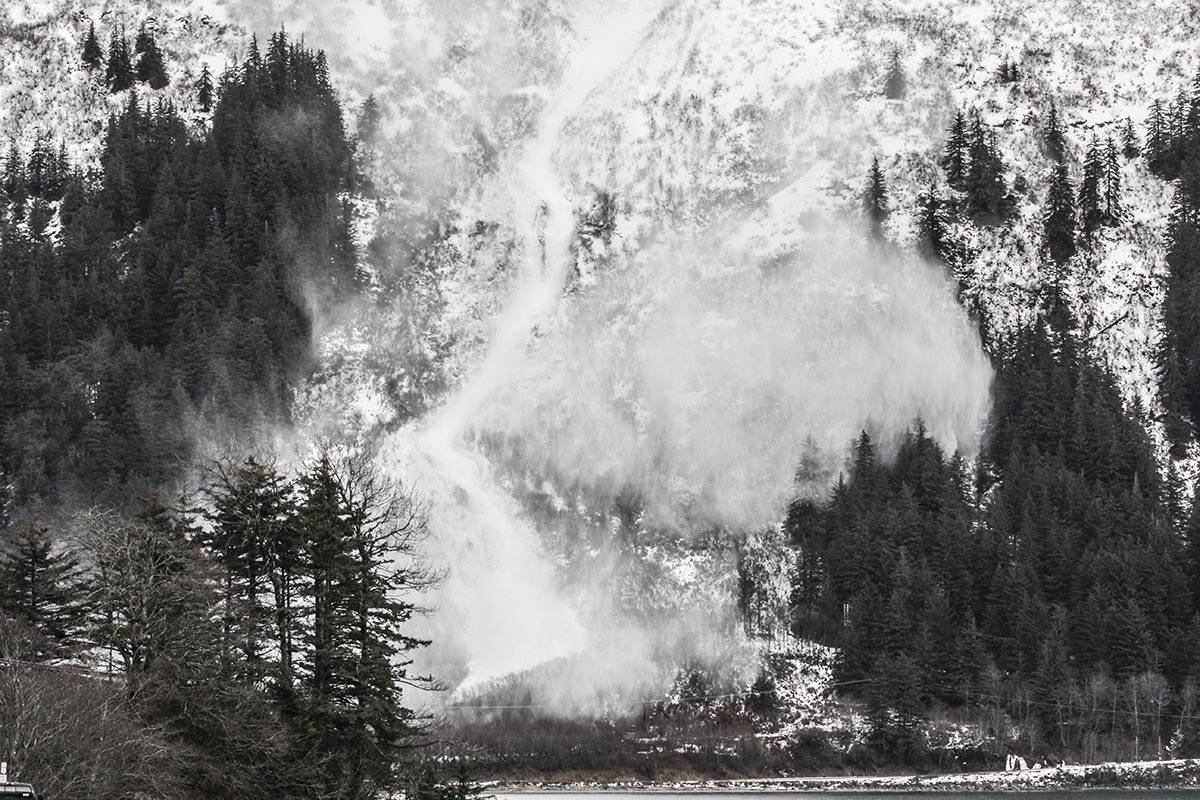An ounce of prevention is worth a pound of cure, an old saying goes. The same must certainly be true of avalanches.
“We had a significant amount of snow in the past 24 hours,” said Pat Dryer, an avalanche forecaster for the Alaska Department of Transportation & Public Facilities. “It’s all snow above 1,100 feet and above. This is not out of the ordinary for our snowpack in any way. We try to do this as much as we can when the weather warrants.”
DOT has been doing avalanche reduction for Juneau since the ‘70s, Dryer said. Juneau is one of the vanishingly few urban avalanche threat areas in the country.
Since 2018, DOT has been using a device called the DaisyBell, carried beneath a helicopter, called slingloading, as a more precise and inexpensive alternative than the previous option, a 105mm howitzer fired from Sandy Beach.
“It mixes hydrogen and oxygen to make an explosion,” Dryer said, speaking about the DaisyBell. “We’re more mobile with it. We can place the shot anywhere in the slide path.”
The flight Tuesday was flown due to optimal weather conditions, with clear, sunny skies being good for flight operations. Dryer says that they keep an eye on the conditions of the snowpack and with the new dependence on flight operations to reduce the avalanche hazard, the weather.
“A lot of that with the DaisyBell is based on flyable weather,” Dryer said. “We’re just a little more dependent on the weather. We try to give Thane residents at least 24-48 hours notice.”
While firing the 105 was less weather-dependent, Dryer said, each shot from the DaisyBell costs less than $5, and they can employ it with considerably more precision.
“The helicopter is a lot less expensive than using the howitzer,” Dryer said.
Coastal Helicopters contracts with DOT to fly the DaisyBell, which doesn’t require any particular training beyond flying with slingloads, as opposed to artillery, which requires a certain level of specialized training and ordinance.
According to Dryer, there are only five DaisyBells in the United States, three of which are in Alaska and two of which are right here in Juneau. One is with DOT and the other is with Alaska Electric Light and Power.

